SEP 2024 - FEB 2025


SEP 2024 - FEB 2025

Euthanasia: The Last Act of Kindness When to Say Goodbye
10 Common Cat Accidents and How to Prevent Them
The SPCA (HK) joins forces with Hello Kitty to raise awareness on animal welfare in Hong Kong.
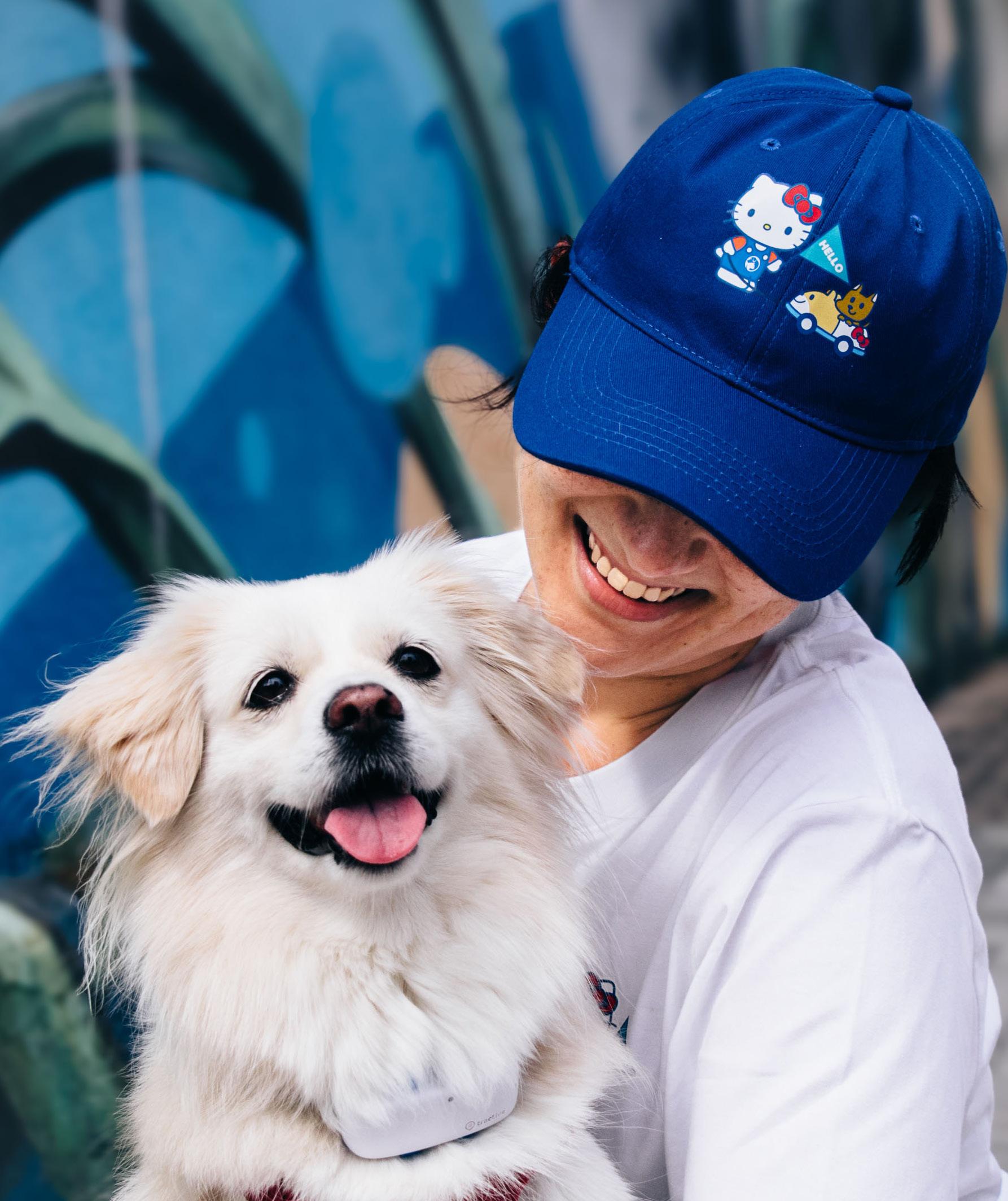


Visit our online shop for more limited edition Hello Kitty x Hello SPCA merchandise and stay tuned for other Sanrio character release throughout 2024.

A huge misconception is that we are government funded when in fact only 1% of our funds come from the government. The majority of our funds come from our veterinary services, membership and your generous donations.
Pawprint magazine is free ! If you enjoy reading our content, please consider donating to support our efforts towards building a pet-inclusive Hong Kong.
Scan to donate and state Pawprint in the remark section of PayMe.


For collaboration, distribution or advertising inquiries, please email pawprint@spca.org.hk
Inspector’s Story: 10 Common Cat Accidents and How to Avoid Them
Sophia Hotung: The artist behind Tsing Yi Centre’s new ‘Where’s Wags?’ artwork
Euthanasia: The Last Act of Kindness
Does the SPCA euthanise rescue animals due to lack of space?
Animal Sponsorship Programme
Happy Ever After: Dr. Gladys & Tommy
Adoption Date: Purrfectly Imperfect Cats
Upcoming Raffle Prizes & Events
Creative fundraisers that put the fun in

The SPCA (HK) was founded in 1921, and the landscape of Animal Welfare in Hong Kong has evolved since then. To best serve the community, apart from establishing a new centre in Tsing Yi, we felt the need to refresh our vision and mission that was created many years ago.
Owned and unowned animals suffer from the lack of humane treatment from pet owners and the general public, and the acceptance of pets across the city remains low despite a rise in pet ownership. This is why we continue to ramp up our advocacy, services, and education to end animal cruelty, alleviate suffering, and protect the health and welfare of all animals across Hong Kong.
We stand as 'One Voice' for all animals and people in Hong Kong, with a vision to create ‘One Hong Kong’ where all animals are treated with compassion and respect. This vision is the very reason why we have expanded our education services at our new Tsing Yi Centre and continue to provide free resources in the form of Pawprint to promote responsible pet ownership.
We hope you enjoy this issue, which celebrates the incredible Human-Animal Bond.
Executive Director

Ms Fiona Cumming

Everyday, I get to experience the incredible bond with my own dog first-hand. They are such intelligent creatures that amuse me daily and inspire my work at the SPCA. It particularly brings me joy to see volunteers or first-time adopters building extraordinary bonds with our rescue animals. What are you waiting for? Sign up to volunteer, foster or adopt and experience this bond for yourself!
Front Cover
Shot by Jacky Fung
(IG: @jouse_photographer)
Young Jacky is a renowned photographer in Hong Kong and Taiwan. His unique style is artistic; he often photographs dogs, cats, and even eagles. He manages to capture their persona in a captivating manner.


Having a rescue animal as a companion is nothing short of special. Not only are these wonderful creatures able to assimilate into our lives and understand us, but they also have a profound ability to love unconditionally and connect us to others. 12/10 would recommend.
Photographer
Emily Choi
Special Thanks
Yolanda Cheung
Thomas Chow
Natalie Chan
Grace Leung
Sum Cho Ming
Vicky Poon
Steve Tso
We take care of their daily needs but they take care of our mental health. The love between us and companion animals is so powerful yet difficult to explain. Invite a pet into your life to experience this bond firsthand.
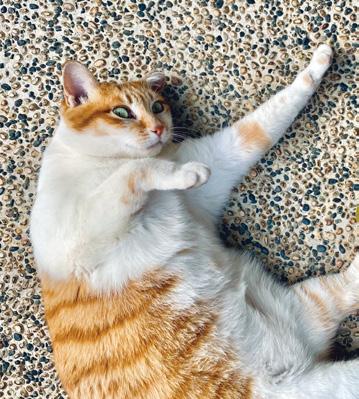
Haruki Murakami says: "As long as you have a cat, most troubles will be fine." Animals teach humans how to express love and affection and how to simplify the complexity and chaos of life. Let's learn from the animals!
President
Ms. Gigi Fu
Trustees
Mr. Nick Debnam
Ms. Joanna Eades
Ms. Gigi Fu
Mr. Tim Hamlett
Mr. Kim J. McCoy
Mrs. Lucy Wong
Executive Committee
Members Chair
Ms. Joanna Eades
Honorary Treasurer
Mr. Nick Debnam
Honorary Secretary
Ms. Amanda Whitfort
Committee Members
Mr. John Barnes
Ms. Vanessa Barrs
Mr. Nathaniel Y. Chan
Ms. Cherry Chau
Mr. Baldwin Cheng
Mr. Mathew Gollop
Mr. Robert Morris
Ms. Jennifer Van Dale
Executive Director
Ms. Fiona Cumming
Deputy Executive Director
Ms. Louisa Ho















The bond between humans and animals has long been celebrated for its ability to heal, comfort, and inspire, and there are a number of ways to experience this transformative bond firsthand.

We look at the stories of six individuals who have been inspired by their connection with animals and have chosen to embark on a journey filled with purpose and a deep sense of fulfilment as they contribute to the well-being of companions in need.



Yau Man Kit (or Kit)
Vehicle Technician & Volunteer
Kit had been feeding over 30 unowned cats in his village for five years before learning about the SPCA’s Cat Colony Care Programme (CCCP) and officially signing on as a volunteer in 2023.
Developing trust with a stray cat can take time, sometimes months. However, contrary to popular belief, unowned cats won’t just appear when it is feeding time and disappear once they have had their meal. The cats in Kit’s village would sleep in the loft of his workshop, where they stored their uniforms and car parts, and sometimes watch him work and approach him to ask for pets.
“[Caring for these cats] motivates me to go to work every day. It also feels great when the cats accept me. By feeding them, I gradually earned their trust and I know they need me.”
“I know from the bottom of my heart that street cats [without help or proper care] lead a tough life, and it is easy for them to get sick. They must fend for themselves. Longevity is hardly their fate. They may die easily, but it’s not something I want to get used to. That’s why I’m still here for them.”


During the shooting of our front cover, which features Kit and one of the stray cats in his village, Mui Mui, you can tell that Kit has a strong bond with these cats, and that bond is reciprocated. However, two weeks after the shoot, Mui Mui passed away from a suspected poisoning.
“It feels like losing a family member” Kit laments. Despite this, Kit would not change a thing.
Kit shares that his life was “kind of boring” before he became a volunteer. Since taking on the role of caring for these cats, he has become more active and has more topics to talk about with friends and family. He has also started trying to find adoptive families for the young kittens he finds and has five cats at home himself.
Even though doing all this volunteer work on top of his job can sometimes be exhausting or frustrating - especially when an adoptive family falls through, or a cat is returned - the feeling Kit has knowing he has helped a cat or found a kitten an adoptive family far outweighs any pain or hardship.



Imogen Dean and Cardeux Nel
Speech-Language therapist and Physiotherapist, Foster Parents Expatriates, Imogen and her partner, Cardeux, get their “dose” of animals by fostering for the SPCA.
“We are both big animal lovers but are not in a position to own any pets right now.” The couple started fostering in 2018 after several people suggested they would be good at it and have since taken in around 53 cats and kittens, and counting.
Although fostering does come with some challenges, the benefits far outweigh the cons. Knowing that you are always going to come home to love, watching your fosters grow in confidence and eventually seeing them go on to loving families are just some of the rewards. Not to mention, “the snuggles and purrs, which have been scientifically shown to reduce anxiety and boost mental health [in humans]!” Cardeux adds.
When asked what tips they would share with others who are considering becoming foster parents, Imogen says “You should definitely do it. If you are going to foster cats, two really is easier than one! One cat can get bored, leading to mischief. With two, they keep each other happy and busy when you are not available”.
Cardeux adds “One of the benefits of being a foster parent is that you don’t need to be ready to make a lifelong decision or do it by yourself. You can learn as you go, and the SPCA are always there to support you.
“Many people consider fostering animals with the thought that they will be helping the animal, but what they realise along the way is how much their fosters actually help them. Our fosters have changed our lives forever.” - Cardeux

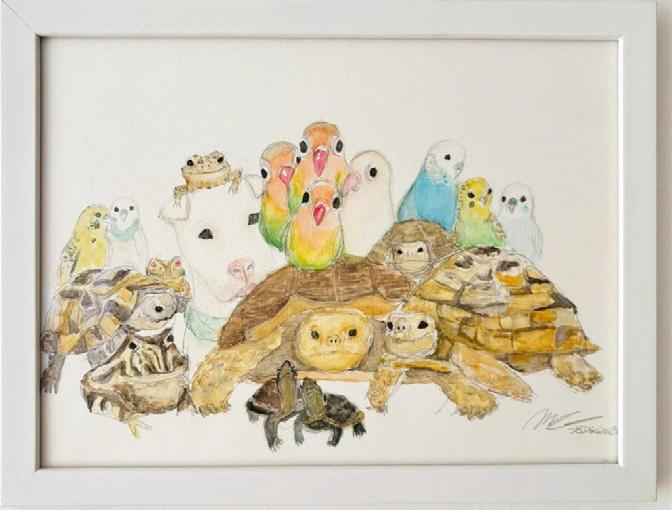




Maggie Chiu
Creative Director of Messy Jam & SPCA Adopter
If you ever ran into Maggie on the street, you would have never guessed that she has over 19 companion animals at home - four tortoises, two turtles, four lovebirds, five budgies, one dog (named Tofu), one gecko, two frogs and a few tanks of fish - most of which she adopted from the SPCA.
Although small animals are not considered as “conventional” as dogs or cats to some, Maggie’s pets provide her with a great deal of companionship and routine throughout her day. “My birds always start tweeting at 6:30 am and my dog, Tofu, wakes at 7 am. He will sniff the cage and greet the birds. My torts wake at around 8 am and start walking around my home, at which point the birds will start to tweet again… My gecko, turtles, and fish will come towards me in their tank every morning. And the torts will come out and stay next to me when I call their name.”
Maggie occasionally brings her pets to her art studio, where she hosts art workshops for kids. The animals are a great way to break the ice.
“We occasionally have some special needs kids who visit, and the torts (Messy and Jamie) always calm them as they are friendly and mellow.”
Although often overlooked in this concept, smaller pets can be great companion animals for those looking to experience the human-animal bond.
Before getting any pet, though, Maggie stresses, “Just be sure to do your research and be prepared before you decide to adopt. Make sure that you have the time and space to care for them. Each species has its own needs, so think twice before you bring home a life.”



Mrs. Wu & Ms. Genevieve Pan Aunt & Niece, SPCA Donors
Mrs. Wu and her late husband, Mr. Wu, started the Albert Wu Charitable Trust to support non-profit organisations across Hong Kong and China. Although they did not have any children, they treated their first dog, Bo Bo, like a family member.
Their love for Bo Bo was the driving force behind their desire to support animal welfare in Hong Kong, and the trust donated towards the SPCA’s animal welfare initiatives, as well as improving the equipment and facilities of the veterinary services at the SPCA’s Wan Chai Centre. They also set up the ‘Bo Bo Wu Animal Welfare Fund’ [in 2003] to provide veterinary care to owners of companion animals who could not otherwise afford it. Mrs. Wu, along with her sister Ms. Foong, have since gone on to donate towards the renovation of the Wan Chai hospital.
The desire to give back to animals in need runs in the family, as Mr. Wu’s niece, Ms. Genevieve Pan, is also a long-time donor.
“My uncle invited me to join his lunch with the then-SPCA head to learn more about what the SPCA does... I still remember learning about the Cinderella Fund and the Inspectorate. I also found out that 99% of the SPCA is funded by public donations, so it’s reliant on Hong Konger’s support.”
The Pan family has donated three rescue vans to the Inspectorate over the years, most recently adding a fourth to the fleet.
The rescue vans are named after her first dog, Snowy, with whom they all had a strong bond.

























Snowy’s favourite pastime was riding in cars with his head poking out of the windows. It therefore seemed very fitting to Ms. Pan to donate rescue vans to the SPCA to honour her first dog, saying “It is a very happy moment for us to see Snowy dashing all over Hong Kong on his missions.”
Mrs. Wu and Genevieve have since gone on to adopt more companion animals and continued to help other animals in need, through their charitable donations to the SPCA.
Mrs. Wu now has a white Pomeranian named Sweetie and most recently donated towards the renovation of the Sai Kung Adopt-A-Pet Centre, which reopened in June 2024 and now has the capacity to house both cats and dogs. Genevieve enjoys the company of her 12-year-old dog, Pip, and 13-year-old cat, Moggi, whom she says are a massive part of her life.
“They are more than just companions. They are my confidants, my friends, and my family.”
- Genevieve Pan


Each of these individuals have chosen different ways to give back to companion animals in need, but one thing remains consistent: the connection we share with our animal companions is a source of immeasurable joy, comfort, and love, with the ability to transform not just one life, but two.
Each of us has the ability to experience this magical bond firsthand and give back to an animal shelter in some shape or form. We know from research that animals help the elderly age better by developing a routine, help humans exercise more, or help kids with special needs learn better.
In the age when everyone is looking for an answer to mental and physical wellness, perhaps we don’t need to look far. The answer lies at your local shelter, with the animals in need.
Scan to learn how you can give back to animals in need and get involved


Mrs. Ng, To May Mee, is no stranger to the joys of having companion animals as pets. Her father particularly loved dogs, and raised dogs of all shapes and sizes, but her family had owned a range of animals including cats, hamsters, birds, fish and even chicken! It was this unique upbringing that has led to her love of animals.
Whilst most people choose to adopt younger, smaller pets, Mrs. Ng’s heart is with the disabled or more senior rescue animals. The ones that are the least likely to get adopted. This particular desire led her to adopt her former dog, Dor Dor from the SPCA - an ex-breeder dog whose neglect had led to her needing half her teeth removed, giving her the characteristic droopy tongue - and her current dog, Neemu, a blind, one-eyed mongrel whom she adopted from the SPCA in 2021, at nine years old.
Today, she honours both Neemu and Dor Dor with the SPCA’s Animal Mosaic programme, and shares why she has chosen this artform to remember her pets.
Why did you want to support the SPCA's Mosaic programme?
I actually really like mosaics. A while ago, I brought Neemu in for grooming and browsed through Pawprint and learned about this programme [and wanted to take part]. It’s really meaningful - after it’s been on display [at the Tsing Yi Centre] I can bring it home and display it there. Most importantly, my parents both left me some money [after they had passed] so I donated that money towards this project in their name, because my dad really loved dogs - my mum loved dogs too, but not as much as my dad! I thought donating in their name would make it extra meaningful [ - remembering my parents and my pets]. It would make them really happy.
How do you feel about the finished piece? It’s so beautiful! I was so happy. The first time I visited the centre, the lift doors opened to them and it was so eye-catching.
Why do you choose to support the SPCA?
Cats and dogs depend on humans… if we don’t take care of them, they would be so helpless. So, if we have a little extra money, why wouldn’t we use it to help?
What legacy would you like to leave in this world?
My parent’s legacy for me was their love, teaching and influence. My grandkids now also love animals. I hope that my legacy would be to teach others unconditional love for all animals in this world.
Neemu and Dor Dor’s mosaics can be found outside our Behaviour & Training classrooms on the first floor of our Tsing Yi Centre.
Learn more about the Mosaic Animal Wall and get your own mosaic



Generally, we do not recommend bathing or shaving cats unless they have skin disease, heavily matted fur, or faecal or urine staining of their coat, or if you have been advised by your veterinary surgeon where it may be a necessary procedure.
We do, however, strongly recommend regular brushing and grooming with a suitable brush or hand mitt. This is a great way to bond with your cat, whilst removing loose hair, reducing instances of hairballs and constipation, and preventing matted fur, which can cause skin disease. Regular grooming is particularly important in older cats who might not be able to groom themselves well due to arthritis or dental issues.
However, if bathing your cat is required, here are some tips to help make the process as smooth and stress-free as possible;

Schedule baths when your cat is at their most mellow.
A play session with a cat teaser or other toy of choice before bath time can help. For your own protection, we recommend trimming claws before bathing.

Give your cat a brush to remove any loose hair and knots. This also helps to remove dirt, grease and dead hair, skin flakes.
Try to brush your cat 1-2 times per week, but if you struggle at home, we advise bringing your cat into the groomers at least once a month for a thorough brushing!

Gently place some cotton wool at the entrance of the ears to keep the water out.
However, before doing so, check for any wax, debris and or infection, and be careful not to place the cotton wool too far down the canal as it may be difficult to remove later. Another option is to gently clean the cat’s ears after bathing with a veterinary recommended ear cleaner to remove any water which may have “got in”.

Place a rubber bath mat in the sink or tub where you’ll be bathing your cat to prevent them from slipping. Fill with three to four inches of lukewarm water - not too hot!
The condition of a cat's skin is an indication of overall health. Use this opportunity to inspect your cat’s skin and take note of any injuries, abnormalities or growths and consult your veterinary surgeon if you find anything unusual.
Use a pitcher, hand-held spray hose or shower head to thoroughly wet your pet, ensuring you avoid the ears, eyes and nose.

Gently massage a small dollop of pet shampoo into your cat’s fur and skin. Work from the head down to the tail, in the direction of hair growth, again, ensuring you avoid the face, ears and eyes.
Do not use human shampoo - this can dry out your cat’s skin. If in doubt, please ask your veterinary surgeon for a recommendation.
Rinse the shampoo off your cat, ensuring you remove all residue. If not, this can irritate your cat’s skin.
Use a damp washcloth to wipe your cat’s face carefully.
Use an extra-diluted solution of shampoo on your damp washcloth if your cat’s face is particularly dirty, being very cautious around their ears and eyes.


Wrap your cat in a large towel and dry them in a warm place, away from drafts. If your cat doesn’t mind the noise, you can use a blow dryer on the lowest heat setting.
Cats with long hair may need help detangling their fur with a wide-toothed comb.
Some cats may not tolerate being groomed, but by no means does this mean you should give up on grooming.
Need assistance? Our team at Hair Force are fully certified with professional grooming qualifications from Hong Kong and Japan. Our pet grooming services are available to all cat and dog “pawrents”, however, SPCA members can enjoy a 10% discount, and earn Hair Miles loyalty points.
Good news! Hair Force Three is now open at our new Tsing Yi Centre. To book your pet a pamper session, call 2232 5532 and start earning Hair Miles today!




Last but definitely not least, reward your cat with endless praise and their favourite treat for a successful bathing session.




Scan for more information

Many of our inspector’s rescues involving our feline friends, such as rescues from car engines, drainage pipes, reclining chairs and precarious window ledges, can be easily avoided.
Here are some strategies to help you be a more responsible cat owner, based on the most common mistakes our inspectors encounter.
1. Install netting or screen doors over windows / balcony area
In 2023, our inspectors handled 264 rescues involving cats falling out of windows or trapped on window ledges. A majority of these cases could have been easily avoided if owners had installed netting over windows and screen doors to the balcony. Don’t wait for an accident to happen to take this safety precaution, and be sure to never leave your cats unsupervised when windows and balcony doors are open - even if netting has been installed.
Do you know what it takes to increase the success rate of rescuing an animal trapped in a high-rise building?
Read here to find out what our inspectors have to say:


2. Do not get and/or remove plants that are toxic to cats
There are a number of common household plants that are actually quite toxic to cats. Lilies are especially toxic - chewing on the leaves, or even drinking the vase water can result in acute kidney failure and death. Below are just a few examples, but it is always advisable to do a quick google search before bringing any flowers or plants home, just to be safe!
• Aloe vera
• Lilies
• Daffodil
• Jade
• Azalea / Rhododendron
• Hydrangea
• Tomato plant
• Tulip
• English Ivy
• Oleander
• Poinsettia
3. Seal off or block any gaps or tight spaces



In 2023, our inspectors received 21 rescue calls for cats stuck in the cracks of sofas or reclining chairs.
Cats are most likely going to hide or try to escape when they are scared or unfamiliar with their environment. Cats feel more comfortable hiding in a dark, enclosed space, and are likely to go under the sofa, behind the cabinet and other tight spaces to escape. Newly adopted cats or cats where their owners are preparing for a move are far more likely to try to hide (or worse still, escape). Owners will need to provide a safe room or even consider caging them (for a short while) to allow them to adapt to their new environment before letting them roam free.



4. Check your washing machine before operating
Washing machines and laundry hampers make a great cosy hiding spot for cats - be sure to keep the washer door closed when not in use, and check carefully before closing or putting a wash on!
5. Store dangerous items safely in cabinets and install childproof latches
Sometimes simply storing potentially dangerous items in cabinets is not enough to keep cats from rummaging through your cabinets. Consider installing childproof latches to securely stowaway dangerous or potentially toxic items such as choking hazards, cleaning products, vitamins, sharp objects and breakable items. Owners also need to be careful with loose string or cotton thread as cats love to play with these items and can swallow them, which can be potentially life-threatening.
6. Keep food stored away and trash secure
The same goes for seemingly ‘harmless’ items like food scraps - what may be harmless to us could be potentially toxic to cats when ingested, such as coffee grounds and foods including chocolates, grapes and onions, to name a few.
7. Secure bookcases and dressers to the wall
Cats love to explore different heights and will often climb or jump to higher vantage points. To prevent them from knocking things over in the process, fix these items securely, and provide cat shelves and scratching posts for your cats. Check P. 40 - 41 What’s Trending for recommendations.
8. Keep the toilet lid down
Apart from the obvious unhygienic nature of drinking toilet water, small cats and kittens could actually fall in and not be able to get out!
9. Never leave a burning candle unattended!
In 2023, our inspectors handled 16 fire-related cases. They can ignite fur if your cat brushes past. It’s better to keep them out of reach and in rooms your pet does not have access to. Burning candles can also emit harmful chemicals and air pollutants, including carbon monoxide, which can be detrimental to health. Therefore, it is important to choose candles made from non-toxic and natural ingredients, such as soy or beeswax, to minimise the risk.
10. And finally, check your car engines before driving off! Sometimes during the cooler months, cats love to crawl up into car engines to escape the cold and keep warm. In 2023, our inspectors handled 43 rescues involving cats in car engines!
Sometimes, despite our best efforts to reduce risks for our cat, accidents still happen. Being prepared for these situations can make all the difference between life or death.
• Keep the contact information to your cat’s vet readily accessible for any concerns or questions
• Know where and how to contact the closest emergency, 24-hour veterinary service in your area for any unexpected mishaps
• For rescue help, call our 24-hour inspector hotline at 2711 1000
Our animal rescue services are free of charge - to support our Inspectorate and animal rescue efforts please consider donating here:


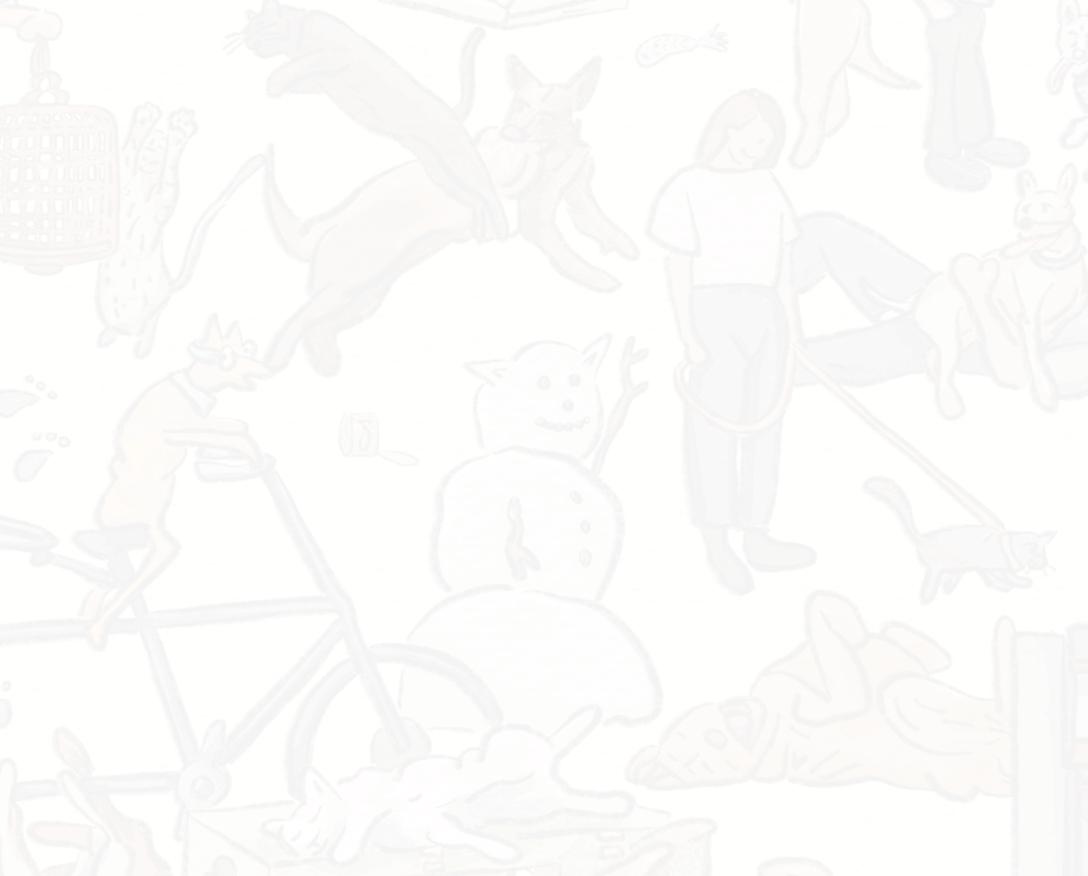




The SPCA Jockey Club Centennial Centre boasts a new 3.5-metre-tall artwork at the ground floor cafe. The Where’s Wags? mural, created by Eurasian artist Sophia Hotung,was inspired by her childhood favourite puzzle book, Where’s Waldo?
The self-taught artist started creating art on her iPad when she was diagnosed with an autoimmune disease and bedridden. She eventually rose to fame with her collection, The Hong Konger, inspired by the popular covers of The New Yorker.


Despite being a pet lover and owner her whole life — five of the eight dogs she’s ever owned came from the SPCA — Where's Wags? is Sophia's first solo project exclusively dedicated to animals. So what can we expect? We chatted with Sophia to learn more.




Where do you draw inspiration from for your artwork?
Sophia: Most of my work is based on stories or having fun. I take most of my inspiration from books, literature, magazines, and writing, and one thing I especially enjoyed when I was a kid, was puzzle books. The premise of finding small characters or elements in a large, complicated piece is exciting and fun for a creator to draw, because you can hide Easter eggs and separate stories in, what looks like, chaos! I wanted to gamify the experience of looking at the art, since I imagined that visitors could be waiting a while in the café. I figured, “Let's give them something where the longer you look at it, the more fun it becomes.”

So what kind of stories can we expect to find in Where’s Wags?
Sophia: The Easter eggs we’ve included cover the full diversity of the SPCA. You’ve got cats, dogs, hamsters, rabbits… anything that would pass through the SPCA. Then, you’ve also got humans: vets, inspectors, volunteers, administrative workers. In fact, the way the artwork is designed, nine key specialists at the SPCA get their own section of the artwork to show off their daily activities and skills. There is so much that goes on behind the scenes and on stage at the SPCA, so I wanted the full scope of the organisation’s work and society’s contributions to be on show through mini stories.


And both adults and kids are going to be exploring these stories with a lot of fun!

Sophia: Exactly! It’s meant to be a game for everybody — it’s meant to be fun!




What do you want people to take away from this artwork?
Sophia: I took inspiration from photos in Pawprint issues like this one, the SPCA’s posted visuals, and from my own photos of my adoption centre visit. So, every animal you see is based on a real animal that the SPCA has helped or is helping.
I also hope viewers pick up on the theme of pet inclusivity. That’s when pets can be assimilated into society so they have more enriching, socialised lives. In Where’s Wags?, you’ll see animals interacting with humans in non-pet settings (as well as pet settings). I want to signal that this is a practice we could take out of the artwork and into, not only the centre, but also Hong Kong at large.


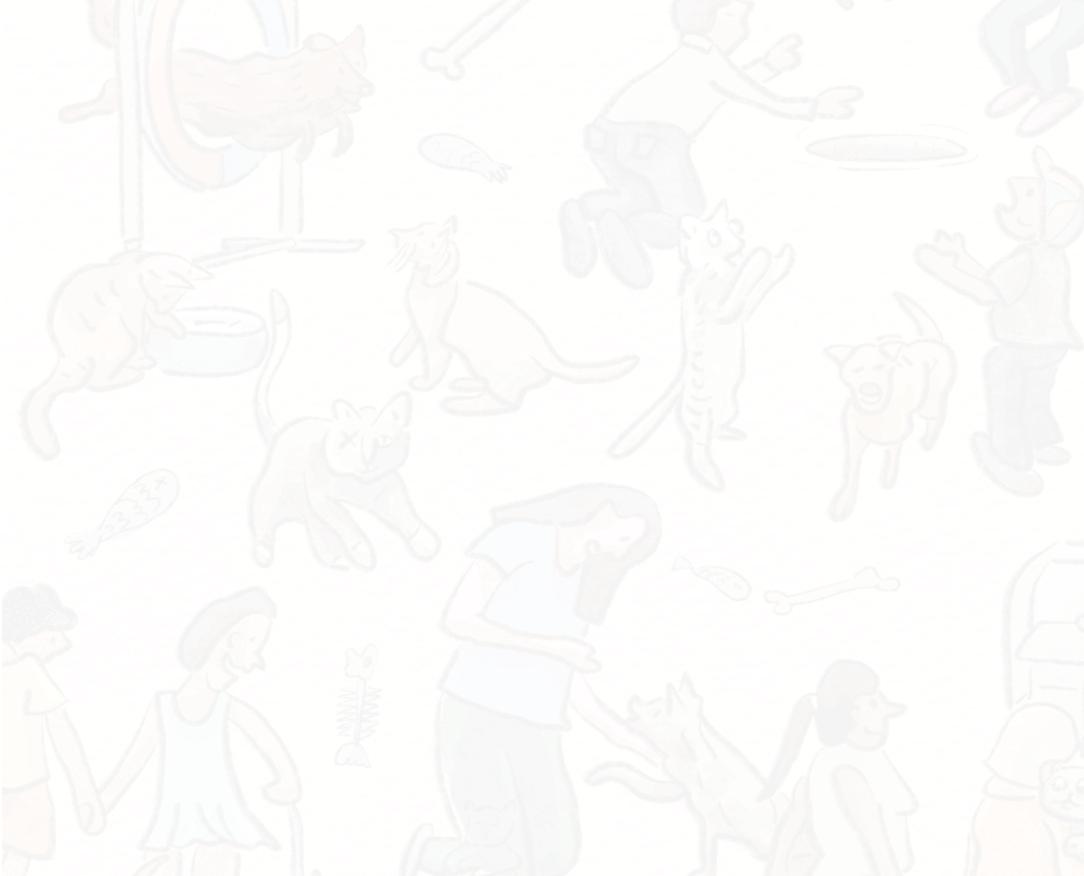
Personally, pets have given me so much joy, confidence, and comfort. To live in a Hong Kong where pets are culturally accepted and part of the fabric of what we do and where we go is important because it helps not only pets but also humans foster a more symbiotic, empathetic culture.
“I want people to be able to garner a story from a lot of my work, and so I try to hide little stories or moments in each one.”
partner with the SPCA?



You have a deep connection with animals! How has having a pet helped you?


Sophia: Five of the eight dogs I have had were or are SPCA rescues. I have memories of going to training with my first dog, Gus, in the Wan Chai Centre when I was nine. A few years ago, my current dog, Sparky, needed surgeries, so of course we went to the Wan Chai Clinic. I used to work in Kowloon Tong and would buy dog food from the skinny Kowloon Centre on the way home. My life has overlapped with the SPCA for as long as I can remember — going there for vet care, products, pet training, even training for myself! — so when the opportunity arose to work with the SPCA, I thought, “They’ve given me, my family, and of course my pets so much. Of course, I’d want to contribute in some way.”
The key unifying feature through a lot of my work is joy, colour, and silliness. I like to create art that conveys equivalent emotions. While touring the centre, you do see some animals who have experienced awful trauma, but in their kennels here, they are leaping about and happy. I think it’s a testament to their resilience, and I am hoping to translate that into the artwork: despite trauma, despite real suffering, these injured cats, these traumatised dogs, these abandoned rabbits still carry light and joy.
Sophia: I have seven chronic illnesses and actually only became an artist because I couldn’t continue my old corporate job because I was too sick. During the times I was bedridden, my two dogs, Coco and Sparky, would hang out by my bed with me (they’re too big to actually share the bed). They were a source of comfort when I felt scared of my prognoses, I felt safe from fainting when they took me for recuperative walks. They still do this and it’s formed a close trust and bond that I feel has helped me in so many ways: medically, psychologically, socially, and creatively.



“There’s something to be said about how humans can relate to a totally different species and feel so fulfilled from it - and vice versa”
Anything you would like to say to people who are looking for a furry companion?





Sophia:The takeaway is always “adopt, rather than shop”. But that’s the tip of the iceberg. Some psychological barriers to adopting a pet are valid: it may be too expensive, too cumbersome, you’re too young, you’re too old, the list goes on. But there are many different ways to care for animals outside of the traditional model. I have a friend in her twenties who doesn’t really know what her life is going to look like in 10 years, so she adopted an elderly dog. It’s not going to be around as long as a puppy, but she’s giving an elderly dog a comfortable life until he’s gone. Other friends love to foster cats, a crucial support to organisations like the SPCA. Other friends co-parent dogs. They’ll live apart but when one human is travelling or busy, the pet stays with their other human. Then of course, why not volunteer? Involvement is diverse and realistic. There are so many ways to dip your toe in and get involved.
Where’s Wags? will be displayed at the SPCA Jockey Club Centennial Centre for you to discover the 103 stories within the painting. The limited edition prints and merchandise will be available soon! Stay tuned.
Scan to learn more about Where’s Wags?



No pet owner ever wants to dwell on the day they have to say goodbye to their beloved pet, much less be the one to decide when it happens. But the choice to give our pets a dignified death when faced with intractable suffering and/or pain due to a chronic disease or debilitating injury is a matter of good animal welfare, and the last act of kindness we can do for our pets.
When euthanasia is recommended by a veterinary surgeon, it can be difficult for many owners, especially for first time pet owners. To help gain a better understanding of why a veterinary surgeon may advise euthanasia, and when it is time to let go, here’s everything you need to know:
What is euthanasia?
The concept of allowing a patient to experience a quick and painfree death as opposed to a slow, painful, or undignified death was named a “good death” by the Greeks.
Euthanasia in companion animals is performed by injecting an anaesthetic drug, usually directly into a vein or sometimes, body cavity, which gently and painlessly puts the animal to “sleep” within a few seconds.
When would veterinary surgeons recommend to euthanise an animal?
Euthanasia may be recommended by a veterinary surgeon when an animal has been diagnosed with an illness or injury where surgery or prolonged medical intervention is not able to resolve or alleviate suffering in the long-term.
If a veterinary surgeon foresees euthanasia as a possible outcome in a pet’s prognosis, this will be brought to the attention of the owner early on, to allow them time to reflect and consider it. It is important to realise this is not a negative suggestion but is done with the best intentions to help the owner fully process the situation and allow them to understand all available options.
Failure to properly consider the option of euthanasia in a timely manner can result in poor animal welfare and unnecessary suffering for the individual animal concerned.
How do veterinary surgeons decide when it’s appropriate?
This choice is never offered lightly by veterinary surgeons, whose primary goal is always to improve the quality of life of every animal under their care.
Veterinary surgeons take a holistic approach to look at all aspects of the pet’s health including appetite, mobility, activity levels, pain and social interactions to determine quality of life and they usually draw from three areas when diagnosing an animal’s condition and determining its prognosis;
Diagnostic tests (including laboratory tests, x-rays, ultrasound etc.)
Physical examination of the animal, and
Owner reporting (i.e. reduced appetite, dull and depressed, difficulty moving around the house)
The goal is always to improve quality of life to at least “OK” on the below chart. If this is not possible then euthanasia is a valid welfare decision. Leaving an animal to suffer should never be an option.
One tool used by veterinary surgeons and pet care givers, known as The HHHHHMM Scale, allows for the assessment of quality of life on a scale of zero to ten in each of the following criteria, with a score of 10 being ideal:
But, what if I’m not ready to let go and want to keep trying?
Just because an animal can be kept alive does not mean that this is ethically appropriate.
Letting go is never easy and sometimes emotion and love for their pet can cloud the owner’s decision-making process; allowing prolonged, unnecessary suffering. If a veterinary surgeon has recommended to euthanise your pet, it is likely that the prognosis for your pet is not favourable and no amount of treatment will improve their quality of life, but only prolong their suffering.
If this has been brought to your attention, and you go against advice to euthanise your pet, you are likely to be unwittingly permitting the unnecessary suffering of an animal by refusing to end its poor quality of life. Whilst we do appreciate that saying goodbye is a difficult decision, carers should never put their personal feelings before their pet’s welfare. Being a good owner is being able to say goodbye at the right time.
To help owners answer the question “Is it time?”
Dr. Bernard Hershhorn, D.V.M. highlights six criteria in his book, Active Years for Your Aging Dog;
Six criteria to consider before euthanising a pet: 1 3 5 2 4 6
Is the condition prolonged, recurring, or getting worse?
Is the condition no longer responding to therapy?
Is your pet in pain or otherwise physically suffering?
Is it no longer possible to alleviate your pet’s pain or suffering?
If your pet should recover, will they likely be chronically ill, an invalid, or unable to care for themselves as a healthy pet?
If your pet recovers, are they no longer able to enjoy life, or will they have severe personality changes?
Dr. Hershhorn goes on to say that if the answers to all six questions is ‘yes', then euthanising your pet on welfare grounds would be the best option for the animal concerned. If your answers to question 3 and 4 are ‘no’, then maybe the option to medicate is still available. However, one must answer three more questions:
1 3 2
Can you provide the necessary care?
Will such care so interfere with your own life as to create serious problems with you or your family? If your relationship with your pet is changed or damaged by this care then this is also a major consideration.
Will the cost involved be beyond your means?
If the answer to these three additional questions are 1) ‘yes’ 2) ‘no’ 3) ‘no’ then talking to your veterinary surgeon regarding adjusting medications and considering other pain-relieving modalities such as acupuncture and physiotherapy could be an option.




Space to say goodbye
If you are at the stage where you unfortunately need to say goodbye to your pet and need to book an appointment for euthanasia, do let our counter staff know so that every effort can be made to ensure privacy and a suitable environment can be prepared for you ahead of time.
Here at the SPCA, we have Quiet Rooms available at our Wan Chai and Tsing Yi Centres to give pet owners and their pets the privacy they need to say goodbye, as well as process their grief.




Don’t entertain feelings of guilt
You should not entertain any guilt over the act of euthanasia itself but remember it as the act of responsible ownership and kindness that it is.


Include your family and friends in the discussion and decision-making process
Their support will be important. Be sympathetic but honest with children who may not entirely understand the need for the decision.



Should I stay or should I go?
When the moment comes, it is entirely up to you whether you wish to stay in the room during the process. This is a personal decision; however, our veterinary surgeons always recommend being present (if not too distressing) as this not only helps to calm the animal but also helps with acceptance of your pet’s passing.

Seek help or join a support group


The death of a beloved pet will naturally result in a grieving process. This takes time. Losing a pet can be just as painful as losing a family member. Seeking help or joining a support group such as Never Too Old to Love, can be a great source of comfort and therapy to work through your grief.
For more information scan here:

We’ve covered euthanasia amongst owned pets, but what about unowned animals and those we rescue?
No, the SPCA does not euthanise animals due to lack of space. However, this has happened in the past, but not for many years. For instance in 1996 when our centres were overwhelmed with nearly 2,000 abandoned dogs in a two-month period (as a result of the Housing Authority enforcing a ban on pet keeping). Since then, we have continuously lobbied the Government to allow pet keeping in public housing, and have also launched desexing programmes to help bring down the number of unwanted and feral animals.
Due to the success of these programmes, today, euthanasia is only used to alleviate animals from pain and suffering or where an aggressive animal may present a serious risk to human and animal health.
Although space has a role in determining whether we can take in the animals we rescue, lack of capacity is not a reason an animal is euthanised – once they enter our adoption programme, healthy, homeable rescue animals will stay at our centres until they find a home. See P.30 for our long stay animals available for adoption.
People say the SPCA euthanises rescue animals after four days. Is this true?
No, the SPCA does not euthanise animals after four days. This misperception is rooted in our lost-and-found process. Government regulations require a stray animal to be kept for four days before determining the next steps (unless in the veterinary surgeon’s opinion euthanasia is indicated due to immediate and overriding welfare or health concerns). Once the lost-andfound process is completed and depending on the situation, a healthy animal could be returned to its owner, sent to a foster family, be placed for adoption, or sent to AFCD who may rehome the animal via another partner shelter. We do not euthanise healthy, homeable animals. Many of our animals will be treated for medical or behavioural issues in the hope that they will eventually be rehabilitated and will be able to find a home.
What factors do we consider when rescuing an animal and determining whether they are suitable to be rehomed or euthanised?
The SPCA’s mission is to end cruelty, alleviate suffering, and protect the health and welfare of all animals across Hong Kong, and our primary concern is always the welfare and quality of life of the animal. The same factors discussed earlier for owned pets are considered in the decision-making process concerning rescue and surrendered animals, with the additional consideration of best use of resources given the sheer number of animals we rescue and the limited availability of resources.































We will look at the following things:
Does the animal have any behavioural or psychological conditions? If yes, can they be helped or resolved? Can they live with people? If it’s a stray cat - can they live indoors? Sometimes cats are feral and prefer to live outdoors with their colony. If we come into contact with a cat who is assessed as being a feral or street cat, contrary to popular belief, the SPCA will not automatically euthanise the otherwise perfectly healthy cat, but will instead try to find a colony close to where the cat was found for it to join our Cat Colony Care Programme (CCCP).
Is the animal suffering from an illness? How serious is it? Is it curable? If an animal’s health cannot at least be nursed back to “OK” as previously seen on P. 19’s chart or they suffer from a debilitating chronic illness that requires long-term treatment coupled with a poor quality of life, then euthanasia is a valid welfare option.
The SPCA also needs to consider the rescue animals already in their care - does the newly rescued animal have an infectious disease that would put the other animals at risk? A kitten with a highly contagious feline infectious enteritis virus infection has a low chance of survival, but a high chance of infecting the many kittens and cats we are keeping with a deadly virus. However, with that being said, we do have the capacity to isolate and treat those with mild infectious diseases, and will do so where possible.
How severe are the animal’s injuries? Will it negatively impact the animal’s day-to-day life after treatment? Will it be able to fend for itself if it is released back into the wild? The amputation of a limb is manageable for an animal with an owner but makes fending for oneself out in the wild difficult. Returning a disabled feral cat to the wild, that is unsuitable for adoption, yet unable to hunt or fend for itself would be negligent and lead to poor animal welfare. However, if the animal is homeable, amputation might be an option. In fact, we have multiple three-legged dogs and cats at the SPCA that have managed to find, or are still looking for, a loving home at the SPCA. These include the now adopted Dan Dan - the cover star for our last Pawprint (issue 122) - and Chu Chu (PN 565848), who is currently waiting for his forever home at the SPCA Tsing Yi Centre at the time of writing, to name two!
This helps us determine whether an animal is sent straight to homing or requires foster care once they have gone through their health checks and have been observed. Very young animals which require more care, can go to stay with our foster parents until old enough to go to our Adoption Centres, and remain there until they find their forever homes. The great news is that many more people are interested in adoption, which means we have the capacity to find homes for more senior animals and are seeing animals as old as ten years plus being adopted.
If animals are injured or sick, especially those requiring expensive surgical procedures, the SPCA has professional funds, including the Cinderella Vet Medical Fund, to help provide homeless animals with the necessary urgent medical care they need. However, this is a finite resource, and the SPCA needs to carefully consider which animals we can nurse back to at least “OK” for a better quality of life. Do we use these funds towards prolonging the suffering of an animal with a poor prognosis to undergo lengthy treatments knowing there is a small chance it will survive, or do we use it to help treat a healthy mongrel puppy with a broken leg that we know can go on to have a great quality of life?
Failing one or more of these criteria is not the be-all and end-all. Our vets will look at the bigger picture and consider all aspects and can consult colleagues to ensure all alternatives have been carefully considered.





The SPCA has worked hard over the years to come up with a number of solutions to bring the stray animal population down to more manageable levels

Since the 90s, the SPCA has greatly expanded their education programmes, to educate the general public on animal welfare issues and responsible pet ownership, and ramped up their desexing services to curb the birth of unwanted litters.
The SPCA’s Cat Colony Care Programme (CCCP) was the first ‘Trap, Neuter, Release’ (TNR) Programme in Asia. This has greatly reduced the number of unwanted litters through the free spaying and neutering of stray cats and, as a result, gives us the capacity to care for, and home, older animals.


The SPCA’s Animal Welfare Vehicle provides low-cost desexing services for pets in remote villages, whilst the Mongrel Desexing Programme and Community Dog Programme (CDP) - which provides free desexing services - also help to regulate the population of ‘loosely owned’ and homeless dogs, all of which have brought the animal population back down to more manageable levels; allowing us to save more animals in the long-term.


Both of these graphs demonstrate the effectiveness of desexing programmes such as CCCP and MDP, significantly bringing down the number of cats and dogs euthanised.
*The euthanasia figures in both of these graphs are derived from combined data from AFCD and SPCA and also includes animals that died in care.
During the COVID pandemic, when travel restrictions saw a drop in requirement for our boarding services, the SPCA opened up our boarding kennels to house the additional homeless animals until they were adopted. Now, thankfully with the pandemic behind us, and with the opening of our new Tsing Yi Centre in March 2024, we have the capacity to take in more rescue animals in need.
However, to continue to reduce the city’s abandonment of animals and improve the “save rate” requires the collective effort and support from the general public, and the SPCA cannot do this alone.
The SPCA is a self-supporting NGO which needs to generate 99% of their funds to operate, and be able to maintain ongoing animal rescue and welfare work. As a result, it relies heavily on the public’s support and donations. What you spend on your pet with the SPCA, helps save those animals outdoors. All proceeds from our retail, grooming, boarding, education, behavioural and training, and veterinary services go back to helping our rescue animals. You may also support by adopting and becoming a member.
As well as indirectly supporting our welfare initiatives through the above services, you can also directly sponsor the programmes mentioned, ranging from our Cat Colony Care Programme and Animal Sponsorship Programme, to Cinderella Vet Medical Fund and our Inspector Fund.

Scan here to learn more and donate

As an NGO, we rely heavily on public support, as only 1% of our funding comes from the Government. Your donations and resources play a crucial role in sustaining our efforts to rescue and care for animals in need and can transform an animal’s life.
Don’t believe us? Check out these ‘Before & After’ stories of some of our rescue animals!
Poppy was found to be kept in a filthy environment with 36 other cats, filled with excrement, dirty drinking water and piles of garbage strewn throughout. It took the inspectors three days to find and safely confine all 37 cats, all while enduring the overwhelming stench.
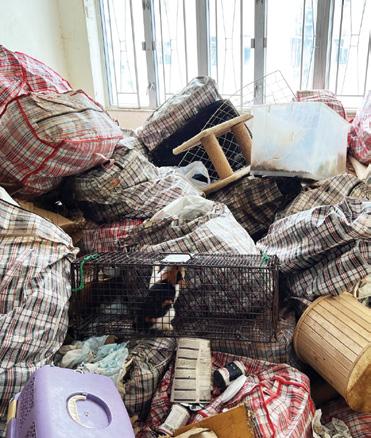










Poppy's previous experiences led to her severe conjunctivitis in both eyes. She also had a host of other ailments. However, through the hard work of our inspectors and the dedicated care provided by our staff, Poppy has made a remarkable recovery and now resides at our Tsing Yi Centre where she waits to be adopted, at the time of writing.

Franco was found on Christmas Day in 2022 with his front left paw caught in an illegal wire trap in Ta Kwu Ling. Not only did Franco have a nasty cut on his left wrist where the trap had cut into his flesh, but he also had some cracked teeth, and it was suspected that he attempted to chew the trap to free






Despite everything Franco had been through, he remained friendly to people and dogs. With the help from the SPCA staff, including the medical team and behavioural and training team, he recovered fully. After staying with us for six months, Franco found his forever family and never had to spend Christmas day alone again.


5-year-old Lego was found amongst 23 other Norwegian Forest cats in an abandoned 80 sq ft office space filled with garbage, empty cages, and faeces scattering the floor. There was no food and water for the cats, who were found to be in poor condition, and unfortunately, one had already died on site. Lego was a mere 3kg.
Despite suffering from some dental issues due to neglect, Lego was one of the first from this group to move into our Wan Chai Adoption Centre to be rehomed.






Scan to learn more about ASP and donate today himself.











Lego has since been adopted by a loving family, where she has two dogs and three other cat siblings at home, and now goes by the name Sophie.




Unfortunately, these cases are not rare. The SPCA encounters many rescue animals with similar, if not worse, backgrounds, and we cannot care for these animals without your help!
Support the SPCA by donating to the Animal Sponsorship Programme (ASP)! Your donations are crucial in helping us cover the expenses required for these animals’ medical and daily needs until they are adopted. These can range from basic needs such as food, vaccination, microchipping, and veterinary check-ups to more specialist needs such as behavioural, training, or rehabilitation.
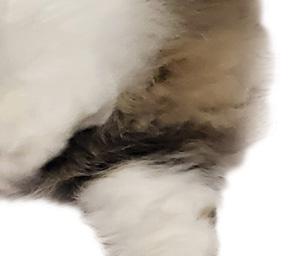








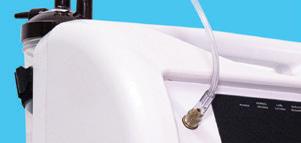





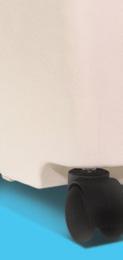




































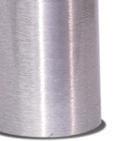















































As a vet, do you encounter many animals that you want to foster or adopt?
Being a vet, I can safely say it is in my blood to care for animals in need. On top of this, I know I have the knowledge, skills and experience to look after them, so I get very tempted everytime a stray animal comes in.
What was different about Tommy that made him a foster fail? Is this your first?
I am a prime example of foster failures! Since 2019, I have fostered over 20 animals (five fish, three frogs, three lizards, eight cats, two dogs and one bird), and ended up adopting 15 of them. From day one, Tommy has been a very compliant, active and lovely dog. He also adores his feline brothers, so it was a very easy ‘yes’.

with
What is your role at the SPCA?
I am one of the senior veterinary surgeons in the SPCA. I am also the head veterinary surgeon of our Sai Kung clinic.
How did you come to foster Tommy?
After losing our dog a year ago, [my partner and I] felt we were ready for another dog. I have always been passionate about fostering animals as I feel it offers a win-win situation for both: the animal gets the care it needs, and we can also gauge how it settles with our family (we have three cats and a lizard). The opportunity arose when little Tommy, at six weeks old, was found by our inspectors. Not only was Tommy very young with unsure vaccination status, but he also had a contagious skin disease. Therefore, it was in the best interest of both Tommy and the other animals in our centre, that he be fostered!

Tommy has picked up some of his feline siblings’ traits
How has Tommy blossomed since you first brought him home? Any funny traits or stories you would like to share?
Tommy was never shy with us to begin with. However, initially he was a little intimidated by big trucks and buses in public. With time, and after multiple training sessions, he is now walking with ease.
The funniest trait about Tommy is he acts very much like a cat, after all he was raised by three cats! Tommy likes to jump up to high places such as dining tables or window ledges, to sleep.
Tommy is a large dog, at a whopping 28 kg at seven months old, so he requires a lot of exercise and enrichment. I walk him at least two hours a day so it has improved my fitness. His friendly nature has also meant that we have made a lot of human and canine friends during our daily walks.
I have the privilege to bring Tommy to work with me. He is like a big friendly giant that gives everyone at the clinic the best cuddles and kisses.
One of the most impressive events I had with Tommy actually happened at work. Sadly, I had to euthanise an end stage, long-term patient of mine due to cancer. My client ended up hugging Tommy (with Tommy giving her endless kisses) while letting her emotions out afterwards. She was very grateful at how comforting Tommy had made her feel.

now
Adoption is a lifelong decision so should be considered at length before committing. Giving an animal a second chance is indeed giving yourself a new view on life - they will give you unconditional support and love. I have had many low points in life, and I cannot describe to you the magnitude of comfort and support I feel just having my pets' companionship.
If one cannot commit to adoption, then fostering is another fantastic way to benefit both the animal and you. Giving an animal the emotional or medical attention it needs until it is strong enough to continue its own journey is one of the most fulfilling feelings in the world. You may even shed a tear or two when you return them - I know I did!
Interested to foster or adopt from the SPCA? Download the Adoption Date app



Our Welfare Work in Numbers - February - June 2024
Homing Figures
Dogs 67 Cats 270 Others 67
Total number of animals 404
Desexing Figures
Total number of animals 5,431
Cat Colony Care Programme
Number of cats handled 942
Number of animals released or referred to government or outside agencies
Number of exotic species 75
Number of native species 987
Sent to foster care
Dogs 31 Cats 214 Others 18
Total number of animals 263
Animals handled Hotline calls
Inspectorate 2,613 9,226 427
Rescues
Complaints of cruelty investigated 293
Animal trading inspections 167
Advice given 82
Warnings given 12
Prosecutions instigated 14
In the first half of this year, the SPCA received 767 cats, which is an 11% increase compared to the same period last year. There has also been a significant rise in the number of abandoned pedigree cats with illnesses, and we suspect many of these cats were purchased from pet stores or online and smuggled into Hong Kong. When these cats did not meet the standards of "perfection" or had fallen ill, they were abandoned by their breeders or owners.
As a result, the SPCA, like many other shelters, is over capacity. We strongly urge those seeking a companion animal to adopt, and not purchase their pets. By adopting an animal, you help save two lives - your adoptive pet and the next animal in need!




SPCA Tsing Yi Centre PN 553092
4 YO | F | DSH



Some of these cats in Tsing Yi come from a special case. Please call our Centre before visiting 2593 5409
To see more animals available for adoption, visit our centres or download our Adoption Date app









Breed: Domestic Short Hair
Gender: Female (desexed)
Age: 2 years old and 4 months
Issue: Insecurity and stress


Case Details

























Tabby was adopted by Queenie in January 2022, and struggled to settle in due to some family issues at home during that time. Queenie fed Tabby a raw diet twice a day, and would spoon feed Tabby to ensure she ate her meal, but noticed Tabby didn't enjoy her meals this way and eventually allowed her more time to finish her meal.
Tabby mostly stayed in Queenie’s room and generally avoided interacting with other family members. Eventually, Queenie noticed Tabby’s emotions had changed, and she had started to chew on her paw.
Lily’s Notes
Tabby’s issues seem to stem from not having enough hiding or resting places within the home, amongst a few other observations:
Cats need private, safe and quiet places to retreat to, to help them feel secure and happy. Offering some elevated spots to encourage jumping and climbing will help keep your cat active and healthy. Modifications to the flat and furniture can help create multiple levels in the home, and/or buying cat furniture with different levels and surfaces (please see P.40 What’s Trending for recommendations). Other options for hiding places include a cat carrier left open and wooden, plastic or cardboard boxes.
Mental stimulation - cats are hunters and get a lot of mental and physical stimulation whilst catching prey. To mimic this natural hunting behaviour, Queenie can provide toys that resemble prey to keep Tabby mentally stimulated and engaged.
Finally, cats do not normally eat large meals due to their limited stomach capacity. It is very stressful for a cat if they are forced to eat a large meal in a short period of time.
Did you know?
Cats in the wild will eat throughout a 24-hour period, with most feeding activity around dawn and dusk when their prey are active. Meal frequency depends upon the availability of food and of hunting success, and therefore upon the availability of prey. A cat’s meal frequency can be as high as 20 times per day, although there does seem to be variation between cat breeds.
Result
Through the addition of scratching posts, high-resting shelves and hiding places, in addition to implementing a daily routine and regular playtime, Tabby was able to overcome her stress. Feeding times were also adjusted from two times a day to more frequent, smaller meals throughout the day, and no longer spoonfed. The culmination of these practises helped Tabby feel more secure in the home, and Queenie was able to observe improvements in her behaviour within a week.

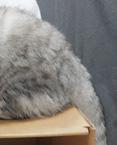
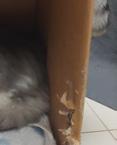

Lily Leung, Senior Behavioural Support Technician
Qualifications:
- Postgraduate Certification Clinical Animal Behaviour Course from the Royal (Dick) School of Veterinary Studies at The University of Edinburgh, Scotland
- The Academy for Dog Trainers
- Feline Behaviour and Psychology from the Center of Excellence
- iCatCare Advanced Feline Behaviour
- Fear Free Certified® Professional
- Advanced Canine Aggression with Dr. Amber Batson


We’re with you every step of the way!
If you have an issue with your pet which you cannot solve, our behavioural consultation services are not limited consultation hours as our Senior Behavioural Support Technician, Lily Leung, provides round the clock support and advice to help you and your pet.
As the adoption rate drops, many animals are staying at our adoption centre longer than we would like. Some of these long-stayers adapt better than others with our animal care team’s support; however, kennel stress does happen to some of them despite being well-cared for and exercised by our staff and volunteer dog walkers.
Let’s take a look at understanding this condition, and how you and our team can support the animals.
Stressors include:
Too many visitors (strangers)
Small living place (kennel size)
Sudden change in diet and routine (e.g. diarrhoea) Noise
Threatening behaviour from other dogs

Lack of exercise or socialisation
Dogs in kennels may display “cage aggression”, they may seem aggressive from an outsider’s perspective. But often, the dogs feel fear, stress, or frustration.







Prolonged stress can impact a dog’s immune system making them more susceptible to illnesses. What can shelters do to help manage kennel stress in dogs?
Knowing the potential stressors or causes of kennel stress can help us identify how to mitigate this in shelter dogs. These include things such as;
At the SPCA, our dedicated Behavioural and Training team focuses on rehabilitating our dogs every day. Training is a great opportunity for mental stimulation and bonding. Teaching dogs tricks and how to overcome challenges creates satisfaction.

Regular exercise to satisfy their physical and mental needs
Each day, our dogs are frequently exercised by our team of animal care staff and volunteer dog walkers.
1. Regular playing time
2. Office visits or more face-time with kennel staff
3. Pack walks for exercise and socialisation
4. Enrichment toys for mental stimulation and problem-solving



How to tell if it’s kennel stress or the dog’s personality?

Room arrangements based on the dogs’ behaviour
For example, sensitive or ‘reactive’ dogs should stay at the end of the corridor or quiet area of the shelter. Dogs that are less affected or happier to greet strangers can stay closer to the main door or lobby area.


Crowd control
How would you feel if a stranger was wandering and snooping just outside your home? Limiting the number of visitors to avoid overwhelming the dogs is one way of doing it. Some of our shyer dogs in our new Tsing Yi Centre can only be visited by appointment to avoid stressing out the animals.

Ask the homing assistants! They are the dogs’ main caregivers and will know the dogs best. It’s the fastest way to get an overview on a dog’s personality, likes and dislikes. If you are interested in adopting and still want to get to know the dog better, ask if you can interact with the dogs outside the kennel area on a walk or in the indoor exercise area. You will see how the dogs behave and their reaction to strangers. Even after the first and second steps, it’s still a long way to go to know their personality, so we would recommend visiting several times to allow you to get to know the dog better.
In conclusion, kennel stress is very real and can affect shelter dogs in a number of ways during extended stay. Don’t overlook the seemingly scared or aggressive dogs for how they behave in kennels as there could be a number of factors affecting the dog. Talk to a member of staff who knows the dog best if you are interested in adopting, and come back for multiple visits to get to know the dog. Although there are ways to mitigate kennel stress, rescue dogs would ultimately thrive in a home of their own, so, please consider adopting long stayers.
If you are unable to adopt, you can still help by joining our Volunteer Programme to give our dogs the much-needed exercise, socialisation and mental stimulation they need to succeed both in, and outside kennels.
Scan to learn more







Volunteers are an important part of our community and enable animal organisations like the SPCA to give the animals the exposure and care they deserve. There are many ways to volunteer, whether that is indirectly, by lending your skills and behind-the-scenes support, or directly, with a more hands-on role, such as fostering or dog walking.
We shine a light on a few of our volunteers to find out what drives them to give back.





Day job: CARE@hkjc Volunteer Team Member
Volunteering since: 2023
Volunteer Role: Helper for touring of Homing Centre on Adoption Date and special events
Why I volunteer:
Little animals are our best companions. However, family issues don’t allow me to keep a pet at home. Being a volunteer lets me have opportunities to interact with them. And I’m glad that I can be a part of helping them get a better life.





Day job: Community Operations Team Lead
Volunteering since: 2024
Volunteer Role: Greeter
Why I volunteer:
Spending time with animals helps me relax. However, I cannot keep a pet due to my apartment regulations. I also like talking to people. That's why I volunteered to be a greeter at Tsing Yi Centre. Witnessing animals being adopted is a great joy. Their barking and meowing always show reluctance to part while they are ready to go home!












Day job: Senior Designer
Volunteering since: 2023
Volunteer Role: Photographer
Why I volunteer:







I love taking photos of portraits, events, and pets as photographs capture priceless moments of happiness. Additionally, I have a particular love for dogs and cats, and spending time with them is one of my greatest joys.





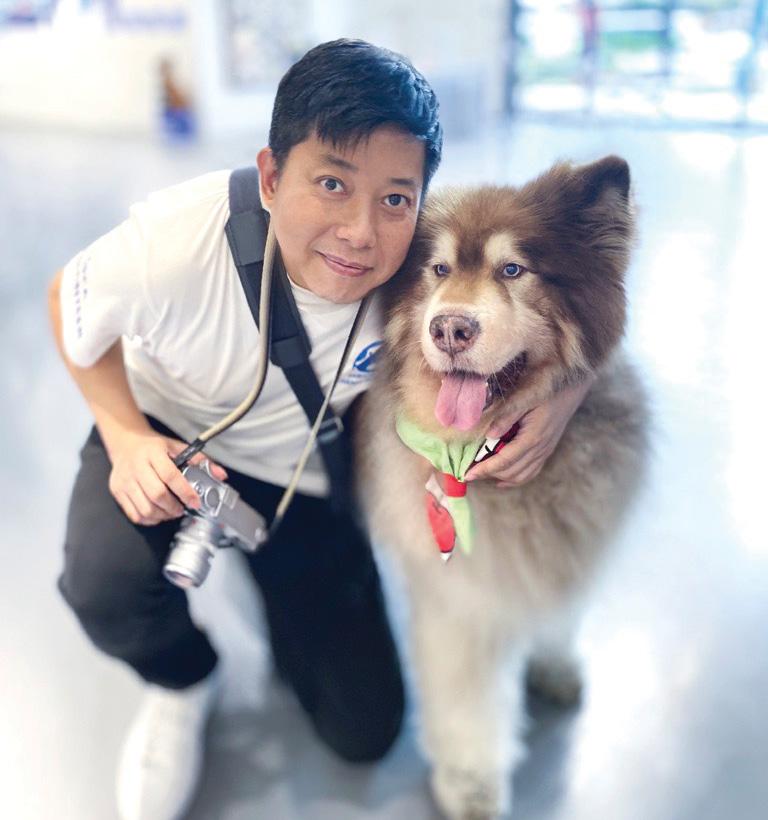







lives of our furry friends?
Are you ready to make a paw-sitive impact on the lives of our furry friends? Through our Corporate Volunteer Programme, your team can participate in team-building exercises, whilst learning more about animal welfare and giving back to our animals!





Day job: Retired
Volunteering since: 2013
Volunteer Role: Dog Walker
Why I volunteer:

Animals are the most vulnerable group in human society, they don’t know how to ask for help even when they have suffered, that is why I joined the SPCA as a volunteer in 2013. Walking dogs can help them adapt to the human world, so that their chance of being homed can increase. My wish is that every animal can find their home sweet home.

Join our volunteer programme

Q: Can you guess which corporation created these cat beds?
A: Our long term corporate volunteers at Bloomberg ! Take on a new challenge and learn to create upcycled dog tug toys using old t-shirts, cat scratch boxes, or cosy cat beds for the rescue animals at the SPCA.
You will be pleased to know that our Corporate Volunteer Program is pet and kid friendly at our new Tsing Yi Centre! If you want a meaningful day out with your kid and fur kid, drop us an email at community@spca.org.hk


Have you ever been on vacation and thought “if only my pet were here”? Now thanks to pet travel companies like Pet Holidays, travelling abroad with your pet is now a reality!
Here are a few tips to plan and prepare for the adventure of a lifetime with your fur kid.




Japan
• Tokyo Senso Temple
• Fuji-Q Highland Theme Park



Some countries are more pet-friendly than others. Pet Holidays’ most popular destinations include Japan, Korea, and Taiwan which all have plenty of pet-friendly activities and take only four hours of airtime or less, from Hong Kong.
These locations also have clear requirements for pets entering the territory, only needing pets to be fully vaccinated, microchipped and hold records of rabies vaccination and antibody titre test, which are all taken care of by Pet Holidays.
These territories also do not require dogs and cats to be quarantined when re-entering Hong Kong, under the AFCD requirements, so you and your pet can simply walk off the plane after your vacation and be on your way home.
How to get there?

Here are just a few examples Korea
*Taipei, Seoul, Okinawa, Tokyo, Osaka, Hokkaido Let's go travel





The best way to travel with your pets is via a shared private jet. Not only does this make travelling in style more affordable, but your pet may even share a seat with you or lie by your feet during the entire flight. They can also enjoy the pleasant cabin service, which offers meal services for both you and your fur kid.
Of Pet Holidays’ most popular destination, Taipei, Seoul, Okinawa, Tokyo, Osaka, Hokkaido have many pet-friendly attractions, allowing you to enjoy the local culture, food, and fun with your BFF.


Korea
• Jinggangtai (Xihe) Ecotourism Area
• Bukchon Hanok Village
• Roadside Station Kobe Fruit Flower Park Osawa
• Busan Haeundae-gu
Learn more about Pet Holidays: www.petholidays.hk
Enter the SPCA Charity Raffle between 13 September to 30 October 2024 for a chance to win a shared private jet experience for one person and one pet to the destination of your choice* with Pet Holidays for just HK$20!
Taiwan
• Yang Ming Shan Qing Tian Gian Grassland
• Hsinchu Zhu Dong Dog Park
• Sun Mook Lake National Scenic Area
+852 6761 8618
Scan here to enter


Pets are our best companions for a reason. They bring us joy, laughter and, most importantly, teach us about life! Their only fault being that they cross the rainbow bridge first. Although no amount of time with them will ever be enough, VieaGem has now created a beautiful way to keep them with us at all times.
With the use of bio-element extraction technology, paw parents have the ability to create unique, one-of-a-kind gemstones of their pets using hair or ashes. Each individual has a unique combination of bio-elements, giving your choice of memorial gemstone its own unique characteristics. Choose from a variety of gems, including sapphire and ruby, to produce a memorial plaque or wearable jewellery and set your love in stone.
All VieaGem gemstones are certified with personalized bioelements and engraved with a unique serial number. The entire manufacturing process takes place at a state-of-the-art laboratory in Korea, where video streaming and records are available for the collection, extraction, and certification of the bio-elements.
Learn more about VieaGem: www.vieagem.com or contact Etta International Limited at +852 90620639, agent of VieaGem in Hong Kong.



Enter the SPCA Charity Raffle between 13 September to 30 October 2024 for a chance to win your unique two-carat sapphire plus free trip to Seoul, Korea to pick up your prize in person (flights and two nights hotel for two included).
Scan here to enter

In collaboration with KFBG, SPCA hosted a guided tour of the grounds at Kadoorie Farm including the exclusive areas, such as the Wildlife Animal Rescue Centre where the rescued wildlife animals are housed.

Professional photographer, CM Leung, shared his top tips on shooting captivating photos and short videos on mobile, using SPCA rescue dog Penny as a model.
An advanced SRL camera photography class was held at a later date, with tips on how to use Lightroom to elevate captured pet photos. A total of HK$20,569 was raised from these two events. We are grateful for CM’s continued support, he also took some amazing images for our homing animals to help increase chances for adoption.

To celebrate the Dragon Boat Festival, guests learned how to make three unique rice dumplings for dogs and cats at our centre, led by Pawffee Shop.


Two Pet Healing Workshops were held under the Never Too Old to Love programme to help pet owners through their grieving process after losing a pet. The first workshop focused on healing through the art of painting, whilst the second consisted of arts and crafts. A sharing session followed with some light refreshments and was free to SPCA members.


We threw a big Hello Kitty! Hello SPCA! Quest – a quiz on animal welfare, at our Tsing Yi Centre. The event saw both human and dog fans of the cartoon superstar grab a booklet and explore the Centre to search for all seven Hello Kitty stamps. Participants who got all answers correct were rewarded with a mystery gift and a special 10% discount at our Tsing Yi Centre’s retail store! Special thanks to the HKJC Care team and SPCA volunteers who helped make this event a success.

Our Adoption Dates are held monthly across our centres, but March was exceptional as we held it at our brand new Tsing Yi Centre, which saw a Marketplace, exclusive guided tour of our hospital with our vets, and a balloon-twisting workshop led by HKJC Care Team. Fast forward to June, and this time, our Adoption Date is held at our newly renovated Sai Kung Adopt-A-Pet Centre where both cats and dogs can be adopted.
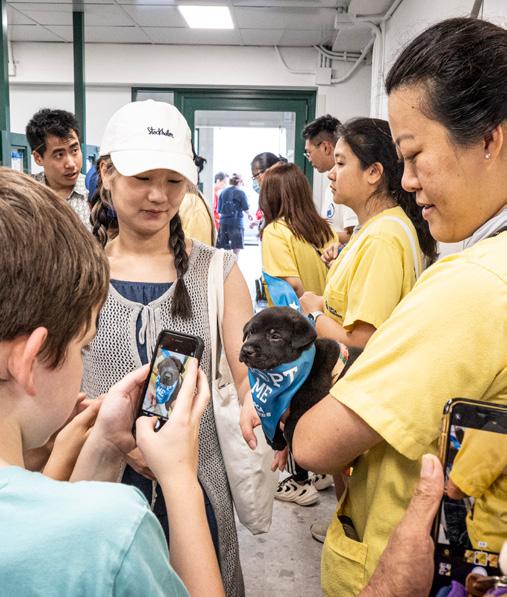
To get into the sporting spirit ahead of the Olympics, Harbour North hosted a series of dog-friendly events including a Dog Yoga Class taught by Tinacyoga, and a Cup Treat Workshop for pets, where owners could make their pets a sport-themed, cup-sized treat.



To keep up to date with our upcoming events,

Petkit Pura Cat Automatic Deodorize Litter
Tray with scoop (HK$688)
This automatic deodorising litter tray releases high-activity negative ions to deactivate viruses and absorb dust and tiny ash. The walk-off platform with a stripe gap of 4.2 mm, enables the stray litter to fall back into the box, whilst the solid air freshener, extracted from plants, is safe and non-toxic to cats, keeping your home clean and fresh. The tray is also easy to dismantle, making cleaning a breeze.
Need kitty litter? We also have a range of kitty litter available on our online store, ranging from HK$60 for a 2.5kg bag to HK$180 for 7L (six bags) .

Size : 374 x 350 x 507mm
It’s so important to make your home a clean and safe environment for both you and your pet!
Here are a few of our top picks to help pet-proof your home.
*Please check with your veterinary surgeon for the right products that suit your pet’s needs.
Cat-netting for windows by PETNAR (starting at HK$784)
PETNAR are your one-stop shop for pet-proofing the home and creating a safe and comfortable environment for your pets. Whether you need help installing window netting or cat doors or customise cat furniture and pet-proof your furniture, PETNAR has got you covered!
Have your very own customised polycarbonate window guard designed by PETNAR starting at HK$1062. You can also choose from a variety of top quality and durable anti-mosquito cat nets to allow for more ventilation. PETNAR can help you measure and securely install your choice of window guard without needing to drill or cause damage to your window frame.
Order five or more pieces to enjoy HK$784 per piece. SPCA members can also enjoy an extra 5% discount!
www.petnar.com (+852) 6368 8640 business@petnar.com
Pet’s Door Fence (HK$250)
Keep your pets safe with this easy to assemble, 76-83 cm pet fence. This self-closing, double locking gate is a safe way to keep dogs (and kids) out of trouble by securely keeping them out of rooms that are off limits. Create pet-free zones in the home or use as a training tool. You don’t need to drill holes into your wall or require a handyman to assemble! Simply unscrew the corners and use the door fence wherever you need it.






(HK$299 - $700)
Cats require toys and various levels in the home to explore, play and let out their prey drive. Protect your furniture and provide safe places for your cats to climb, scratch and release their energy with scratching posts and climbing shelves. We have a variety of cat scratching posts available online and in stores starting from just HK$299.




Purina® PRO PLAN® LIVECLEAR™3.2lb (HK$260 - $290)
Say goodbye to your cat allergies with the latest cat feed formula by Purina® PRO PLAN®, LIVECLEAR™. The feed neutralises the Fel d1 allergen in the cat’s mouth before it can be transferred to their hair and dander when they groom, reducing the allergens present on your cat by 47% from just three weeks of daily feeding! LIVECLEAR™ offers different formulas to fit the nutritional needs of your cat, depending on their life stage, so grab a bag and discover the difference after feeding PRO PLAN® LIVECLEAR™!
Dr. Klēn Starter Pack (HK$128)
Dr. Klēn’s cleaning products are specifically formulated for pets and kills up to 99.99% bacteria and viruses. The Dr. Klēn Starter Pack includes 30 disinfectant tablets and one 500 ml spray bottle, which can be used to wash pet toys, dishes, and water bowls. One tablet can be diluted with two litres of water for large-scale disinfection and cleaning, or 500 ml water for more concentrated sterilisation and disinfection. They can even be used to wash pet bedding - simply throw it in your washing machine and let it work its magic!


Pee pads are a great training tool for dogs, providing a designated space in the home for your pup to do their business, whilst offering you an easy and hygienic solution to keeping your home tidy. These Shukufuku Wide Changing Pads come in three sizes; small, medium, and large, with adhesive tape to prevent the changing pads from slipping and sliding.
If you have a dog that enjoys tearing up pee pads in their spare time, then this training pad holder might be your best option for potty training at home. The solid frame with raised edges helps contain spills and comes with two snap buckles on the side to help keep the training pad in place. It is quick and simple to use and saves you from having to worry about the mess.

The SPCA relies heavily on the generous donations of the public to operate and sustain our ongoing animal welfare work as we only get 1% of funding from the Government. Luckily, we have some very creative supporters who have found a way to put the fun back into fundraising.
Kaiya Medical, a leading provider of high-quality specialist respiratory equipment, donated six oxygen concentrators (valued at HK$58,800) to the SPCA earlier this year to help pets with chronic oxygen deficiencies.
These medical devices deliver concentrated oxygen to pets to improve and stabilise blood oxygen saturation levels. A heartfelt thanks to Kaiya Medical for their generous donation and support.

Sha Tin Wai Dr. Catherine F. Woo Memorial School students created their own unique piggy banks as a fun way to learn about respecting and caring for animals whilst fundraising for the animals in need at the SPCA. A total of HK$13,831.57 was raised.

On 8 May, SPCA Alumni Archie and owner Sandeep hosted yet another fantastic fundraiser for the SPCA at the Thirsty Shaker. Six animal-loving guest bartenders, Ocean Leung, Kiri T, Stephanie Lown, Sever Mican, Carmina Lo and Calvin Au Yeung, shook up their own specially crafted cocktail for the event. 50% of drinks sales were donated to SPCA, raising a whopping HK$17,225, the highest donation of all our pawties so far! Don’t miss the next one on 3 October!

Hotung Secondary School hosted an Open Day Charity Sale on 2223 April, and the S3 students voted to donate HK$9,600 to the SPCA.

Over Easter, a total of 54 participants were some of the first to experience the new SPCA Immersive Classroom. The 270-degree immersive experience led parents and kids through different interactive environments and games to explore the animal kingdom. In addition to the Immersive Journey, they also visited our Homing Centre to learn more about our rescue animals and the importance of “Adopt, Don’t Shop”.
A total of HK$8,910 was raised.
To learn more about our immersive classroom or make a booking, scan here:



Danica from the Student Representative, together with her team from Stephens’ College, generated a donation of HK$3027.30 through a school event in March 2024, where they sold handmade crafts.

Three Island School students, Laura Yong, Jayla Chung, Lili Nixon hosted a charity bake sale during the Hello Kitty Open Day at our new Tsing Yi Centre and sold homemade cupcakes and cookies at the event, raising a total of HK$1,830 for the SPCA.


The SPCA was invited by the Total Loyalty Company to participate in the HSBC Summer Fair at their Central and Olympics HQ on 25th and 27th June. Over 16,000 HSBC staff enjoyed discounted pet supplies and limited edition Sanrio products from our SPCA stall, helping us raise HK$26,000 for our rescue animals and welfare initiatives.

If you would like to engage the SPCA for a fundraising event or perhaps have a fundraising idea of your own, please contact our Community Team community@spca.org.hk

As a member of the SPCA, you can enjoy our
Our premium dog and cat boarding services are now available at our new Tsing Yi Centre, as well as our Wan Chai headquarters!




Individual and connecting rooms are available, with top-class air-conditioning and ventilation.
Members who board their pets at our Wan Chai and Tsing Yi Centres can receive a 20% discount on our full professional grooming service whilst their pet boards with us.
Contact our Customer Service team on 2232 5501 for details and bookings today.
Scan for more information:

Our grooming services are open to everyone, but as a member, you can enjoy a 10% discount and earn “Hair Miles” to redeem extra benefits!
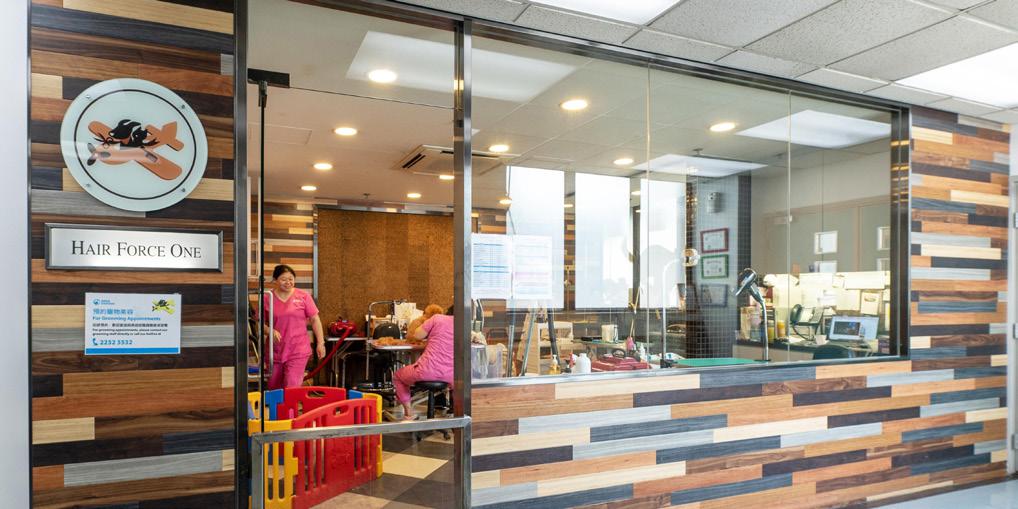


Opening Hours
Hair Force One (Wan Chai Centre) : Daily (9am to 6pm) (Except Christmas, New Year and Chinese New Year)
Hair Force Two (Kowloon Centre) :
Every Tuesday, Thursday, and every other Saturday
Hair Force Three (Tsing Yi Centre) : Every Monday, Wednesday and every other Sunday
Book in to any of our grooming centres today by calling 2232 5532
Scan here to learn more:

The SPCA membership grants you access to our veterinary services, boarding, grooming and other pet-related services at our centres. On top of that, you are also eligible for exclusive discounts on selected merchants - below are just a few!
Scan this code or visit our website to become a member.
Origami Kids Cafe
Enjoy 10% off and free babyccino for kids when making a reservation online by mentioning “SPCA 10% off offer” under “Notes and requests” when booking. Applicable from Monday to Friday (except public holidays).

The restaurant has specific opening hours and requires reservation in advance.
Shop N305, 3/F, Zone N, Kai Tak Cruise Terminal, 33 Shing Fung Road, Kowloon Bay 6063 7470
La Patisserie Bazi
Just present your valid SPCA membership card before ordering to enjoy the exclusive 15% discount.
Kwun Tong Store:
Scan to book:


Room 511, 5/F, Block B, Hoi Luen Industrial Centre, 55 Hoi Yuen Road, Kwun Tong Business Hour: 12:00 - 19:00 (Monday to Sunday)
Wan Chai Store: 87, Hennessey Road A1&A2, Wan Chai Business Hours: 11:00 - 20:00 (Monday to Sunday)
Save on fuel costs, whilst giving back to the SPCA with Shell and Esso
Successfully apply for “Shell Card” to save HK$6 per litre on both Shell FuelSave and V-Power Nitro.
Successfully apply for “Esso Card” to save HK$6.20 per litre on both Esso Synergy Supreme + premium petrol and Synergy Extra petrol.


For every litre of your monthly total fuel consumption, HK$0.10 will be donated to support the Society's animal welfare work.


Limited-edition Hello Kitty! Hello SPCA!
Membership Card






SPCA members can opt for a limited-edition Hello Kitty-themed membership card for an additional HK$100 when renewing or applying for their annual membership from 20 May onwards.
Receive 10% discount when applying for the rental of Dog Cloud bed, the Medical Therapy Dog Bed for pain, stress & immobility relief. It’s a form of medically proven massage therapy hidden in an ultra-comfortable dog bed!


Interested parties, please contact Mr. Oscar Leung for more information.
9258 5070 oscar.leung@evivobio.com
YHA Bradbury Jockey Club Tai Mei Tuk
Youth Hostel
Enjoy 15% off on YHA Bradbury Jockey Club Tai Mei Tuk
Youth Hostel’s Dog-Friendly Package 2.0. Each dormitory can accommodate up to one dog weighing 30 kg or up to three dogs with a combined weight of 30kg (no breed restrictions).
66 Tai Mei Tuk Road, Taipo, New Territories info@yha.org.hk 2788 1638

New Apple Storage members can enjoy an extra 5% discount on top of Apple Storage’s monthly special offers.
Learn More: www.applestorage.com.hk 8208 9822



ATL exemption number ORG – 00002
Our Centres
Hong Kong Centre (Headquarters)
5 Wan Shing Street, Wan Chai 2802 0501
Kowloon Centre
105 Princess Margaret Road, Ho Man Tin 2713 9104
Sai Kung Centre
7 Sha Tsui Path, Sai Kung 2792 1535
Sai Kung Adopt-a-Pet Centre
65 Man Nin Street, Sai Kung 2232 5599
Hang Hau Centre
Flat B, 2/F, Block 5, Hang Hau Village, Tseung Kwan O 2243 0080
Veterinary Services
Hong Kong Centre (Headquarters)
Kowloon Centre
Sai Kung Clinic
Hang Hau Clinic
Mui Wo Clinic
Cheung Chau Clinic
Yuen Long Fairview Park Centre
Tsing Yi Centre 2802 0501
(Veterinary services to be open soon)
Adoption Services
Hong Kong Centre (Headquarters)
Kowloon Centre
Sai Kung Adopt-a-Pet Centre
Tsing Yi Centre 2232 5529
Spaying and Neutering
Spay & Neuter Vehicle providing low-cost desexing to target areas and clients 2232 5513
Spay/Neuter Assistance Programme 2232 5549
Cat Colony Care Programme (CCCP) 2232 5589
Mongrel Desexing Programme (MDP) 2593 5438
Community Dog Programme (CDP) 2232 5511
Cheung Chau Centre
Tung Wan, Cheung Chau 2981 4176
Mui Wo Centre
Shop 14, Mui Wo Centre, Lantau Island 2984 0060
Fairview Animal Welfare Centre

spcahkeng spcahk
Junction of Fairview Park Boulevard and Kam Pok Road, Yuen Long 2482 2770
SPCA Jockey Club Centennial Centre (Tsing Yi Centre)
38 Cheung Fai Road, Tsing Yi, NT 2232 5555
General Enquiries 2802 0501
24-hour Animal Rescue Hotline 2711 1000
China Outreach Programme
Providing assistance to animal welfare agencies and veterinary surgeons in China through education and advice china@spca.org.hk
Education
Talk enquiries and arrangement 2232 5541 / 2232 5526
Animal Rescue and Report of Cruelty 2711 1000
Membership Services
Enquiries on membership status, benefits and activities 2232 5548
Donations 2232 5536 or scan this QR code

Animal Sponsorship Programme With your donation, we can provide animals with the much-needed medical treatments, food and training as they are awaiting adoption. 2232 5510
Other Services
Lost and Found Animals 2232 5553
Behaviour and Training Courses for Dogs 2232 5567
Pet Boarding 2232 5501
Pet Grooming 2232 5532
Pet Wellness 2802 0501
Volunteering
Volunteer Coordination 2232 5508
Foster Parent Programme 2232 5524
Pawprint is published by the Society for the Prevention of Cruelty to Animals (Hong Kong)
©2024 Copyright reserved by SPCA(HK) Society for the Prevention of Cruelty to Animals (Hong Kong). www.spca.org.hk